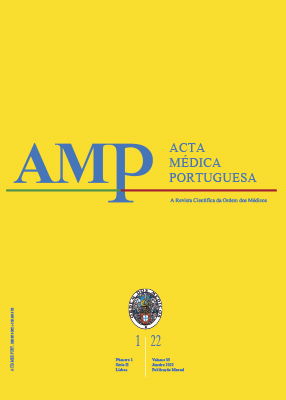Using Whole Genome Sequencing to Investigate a Mock-Outbreak of Carbapenem-Resistant Klebsiella pneumoniae in Real-Time
DOI:
https://doi.org/10.20344/amp.15174Keywords:
Carbapenem-Resistant Enterobacteriaceae/genetics, Gene-Environment Interaction, Infection Control, Klebsiella Infections, Klebsiella pneumoniae/genetics, Whole Genome SequencingAbstract
Introduction: Healthcare associated infections due to carbapenem-resistant Klebsiella pneumoniae (CRKP) are a major concern in Portuguese hospitals. Whole genome sequencing (WGS) can improve infection control, but this practice is not routinely used by hospital clinical laboratories in Portugal. We simulated the investigation of a CRKP outbreak based on WGS, with the aim of determining, in the minimum possible time, genetic relatedness between CRKP clinical and environmental isolates.
Material and Methods: Ten CRKP clinical isolates routinely obtained in the hospital laboratory were used. Forty environmental samples - from sinks and sink drains of ward rooms - were collected. Environmental samples were plated on selective media and presumptive CRKP colonies were isolated. Total DNA was extracted from all putative CRKP isolates and sequenced. Clonal relatedness was determined by multi-locus sequence typing and core genome single nucleotide polymorphism analysis; the presence of carbapenemase genes was evaluated.
Results: Clinical isolates were characterized in 48 hours: eight strains were confirmed as CRKP, of which six were of ST13 and carried blaKPC-3. Environmental samples results were obtained in six days: eight CRKP were isolated from which five were of ST13 and carried blaKPC-3. Clinical and environmental ST13 isolates were highly related: ten (of 11) isolates differed from each other in < 0.001% of 2 172 367 core nucleotides.
Discussion: WGS can be used as a high-resolution effective tool to investigate healthcare associated infections and track routes of dissemination in real-time.
Conclusion: In Portugal, routine use of WGS to improve infection control could thrive through collaborative initiatives between hospitals and research institutes.
Downloads
Downloads
Published
How to Cite
Issue
Section
License
All the articles published in the AMP are open access and comply with the requirements of funding agencies or academic institutions. The AMP is governed by the terms of the Creative Commons ‘Attribution – Non-Commercial Use - (CC-BY-NC)’ license, regarding the use by third parties.
It is the author’s responsibility to obtain approval for the reproduction of figures, tables, etc. from other publications.
Upon acceptance of an article for publication, the authors will be asked to complete the ICMJE “Copyright Liability and Copyright Sharing Statement “(http://www.actamedicaportuguesa.com/info/AMP-NormasPublicacao.pdf) and the “Declaration of Potential Conflicts of Interest” (http:// www.icmje.org/conflicts-of-interest). An e-mail will be sent to the corresponding author to acknowledge receipt of the manuscript.
After publication, the authors are authorised to make their articles available in repositories of their institutions of origin, as long as they always mention where they were published and according to the Creative Commons license.









